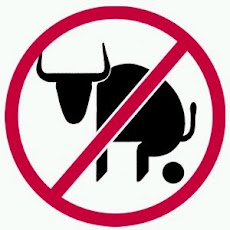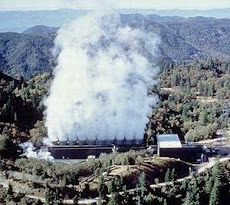Ulysses S. Grant wrote, about a day in March of 1846. “A few days out from Corpus Christi, the immense herd of wild horses that ranged at the time between the Nueces and the Rio Grande was seen directly in advance of the head of the column and but a few miles off. It was the very band from which the horse I was riding had been captured just a few weeks before. The column halted for a rest, and a number of officers, myself among them, rode out two or three miles to see the extent of the herd. The country was a rolling prairie, and, from the higher ground, the vision was obstructed only by the earth’s curvature. As far as the eyes reach to our right, the herd extended. To the left, it extended equally. There was no estimating the animals in it. I have no idea that they could all have been corralled in the State of Rhode Island or Delaware, at one time. If they had been they would have been so thick that the pasturage would have given out the first day.”
This sight was at the height of the Spanish Mustang’s domination of the Plains. And though it was short lived it was a sight that was recorded over and over in astonishment by many an American settler coming onto the Western Plains.
After Texas won its independence from Mexico in 1836 the horses and cattle belonging to the Mexican Ranchers between the San Anontio River and the Rio Grande became virtually free to raiders. These raiders, called “Cow Boys” took only the most manageable animals, leaving the others to run wilder than they had before. This begins the era of the cowboys and open range ranching. It also nurtures the growth of the Mustangers which finally ends with the genocide of the wild Spanish Mustangs to favor the fenced ranches and the beginning of the industrialized cattle industry.
These cowboys took on the ranching style and horse culture of Mexican vaqueros, Americanized to buckaroo. In lower Texas, cowmen who had generally quit raising their own mounts, had a strong preference for horses out of the rough country. Grullas were numerous and were excellent cow horses. The color was slate or mouse with the breed characteristics of barred legs and a dorsal stripe.
The classic bucking bronc who pawed at the moon, broke in two half way up, sunfishing on the way down, hitting the ground hard enough to split a cowboy’s liver, was a distinct trait of the Western Hemisphere. It changed the “English style” of riding with short stirups. As the horse grew wilder the short stirups prevented getting a quick seat and clasping legs against a squirming horse. The stirup was lengthened to make range riding more comfortable and effective. It was believed that the Spanish Mustangs got the trait of bucking from practice in pitching off panthers. However, the range way of letting horses run wild untouched by human hands for three or four years before the brutal process of breaking the horse instead of “gentling”, is most likely the real cause for broncing.
Like the Native American and his horse the cowboy and his horse were like an individual, almost one mind and body working together with a well developed cow sense and a love of the wide open plains. Most of these cowboys had their own remuda of horses that they rode from ranch to ranch but also used the remuda of the ranch for which they worked.
Their are many accounts from cowboys of this period of their Spanish Mustang cow horses and we will cover these in another show, in the future.
In the late 1800’s, when the English speaking ranchers moved into the Spanish zones of Texas, many ranchers began bringing in the blooded stallions from Tennessee and elsewhere. The wild Spanish Mustang stallions were fighting off these blooded stallions. The ranchers conducted roundups on the open prairies, participants were armed and they had orders to kill any wild stallions that broke through the lines. In one recorded roundup by Jim Reeves it was estimated that 15,000 horses were rounded up, as the wild stallions broke through the lines they were shot. Colts, old mares and old horses were trampled to death. About 200 stallions were killed. Several thousand horses were driven north and east for sale. George W. Sanders said of the event. “I have worked cattle from the Rio Grande to Montana, but this round up of horses was the greatest sight I have ever seen on any range.”
Unlike the Native American who used every part of an animal and who selectively breed the Spanish Mustang herds for endurance, speed and strength the English speaking American killed indiscriminantly to protect his investment regardless of the fact that the blooded stallions he invested in could not hold their own in a natural environment against the Wild Spanish Mustang stallions, who had ruled these plains for over two hundred years and had evolved to be masters of the harsh world they inherited.
The Mustanger existed as long as the vaqueros rode horses. The range way of raising horses required mustangers to capture the Spanish Mustangs for “gentling” from the wild herds. Many times the Mexican families were mustangers by tradition. Jack Thorpe recounted a meeting with such a family. “We saw the fast-rising dust of a band of horses approaching us at an angle, and then, as they got closer, two riders crowding them closely. One was a girl on a big white horse. As we watched, she raced alongside a sorrel that was crowding against other mustangs to get away from her. They were all going like the wind. Presently, when she got the position she wanted, she reached over, grabbed the sorrel’s mane, and slipped neatly from her seat onto the wild one’s back. Her saddle was a sheepskin pad, held on by a surcingle to which were fastened two brass stirups, the whole equipment weighing hardly more than three pounds.”
“ All she took with her when she made the glide was a hair rope about ten feet long. As the sorrel raced on at full speed, she threw a little loop over his head, tightened it and then threw upward two half hitches around his nose. With only this bozal (nose band) to guide the runaway, she passed from sight, veering out from the mustang bunch.”
“Immediately after she changed horses, her companion caught the reins of the white mount and led him over to where we had halted in astonishment.”
“‘How’s that girl going to stop her horse? I asked in Spanish. ‘He’s liable to run into the Gulf of Mexico, no?’”
“‘She’ll be back pretty soon, he replied. He was her brother, as we learned.”
“ In about half an hour she was back on the sorrel, now well winded. Using the hair rope as a rein and bozal, she had checked him, gradually brought him around, and was now guiding him. She was maybe fourteen years old, small and wry, weighing about seventy pounds. Pony express riders use to change horses with spectacular rapidity, but theirs were broken. This bit of a girl was skimming onto the back of mustangs that had never felt human hand or rope.”
This account of the original mustangers defined the skill and daring required to capture the Spanish Mustangs by the Mexican families. This was not the only method employed by mustangers through the years. They raced and roped, trapped, creased by bullet, walked down, snared, caught colts and practically became Spanish Mustangs them selves. For over 200 years the mustanger was the source of horses for frontiers men, cowboys, calvary and travelers.
As the 1900’s came to a close and the open range started to become fenced, cow boys turned to mustanging to make a living and to continue the free lifestyle they so loved. The gentleman rancher wanted the Spanish Herds destroyed because they were competing for grazing with their cattle and the need for the horse for transportation and exploration was giving way to the era of industrialization. The Eastern market for horses was drying up and the extermination of the Spanish herds was necessary for western expansion across the Great Plains. The introduction of blooded stallions from the East along with the destruction of the wild Spanish stallions had begun to taint the pure Spanish characteristics of the original herds as they dwindled from millions to just thousands in a couple of decades.
From the 1500’s to the end of the 1800’s the Spanish Mustang had been an industry of horse flesh that European and Native American alike depended on for their economic, spiritual and social moorings and played an important role in the power struggle over the lands of Western America. Without them there would not have been a West.
When I set out to research this show I found so many personal documented accounts of cowboys and mustangers that it became hard to separate just the information about the Spanish Mustang during this period. The people and the mustangs were like one being moving through the annual of history so bound together that to tell ones story is to tell them both. It was not just the stories of horses told by men and women but it was a story of how they came to commune together. How this special breed stole the hearts and minds of the people they came in contact with and proved them selves to be something special within the world of horse culture. Maybe it was the land that brought out the passion in both for freedom, independence, endurance and fortitude, for it had surely done so with all the Native American societies. I know as I look out upon these same western plains, to the far horizon, sitting on my Spanish Mustang as she snorts and sniffs the air, eyes and ears alert to ever sound and I feel her body buzzing with the sheer joy of all the vastness. I have an inkling of the communion; of the utter freedom to be one with nature and its creatures.
Click on title above to Comment on this article.
© copyright 2009 Winthrop Brookhouse
Saturday, December 19, 2009
Subscribe to:
Post Comments (Atom)



















No comments:
Post a Comment